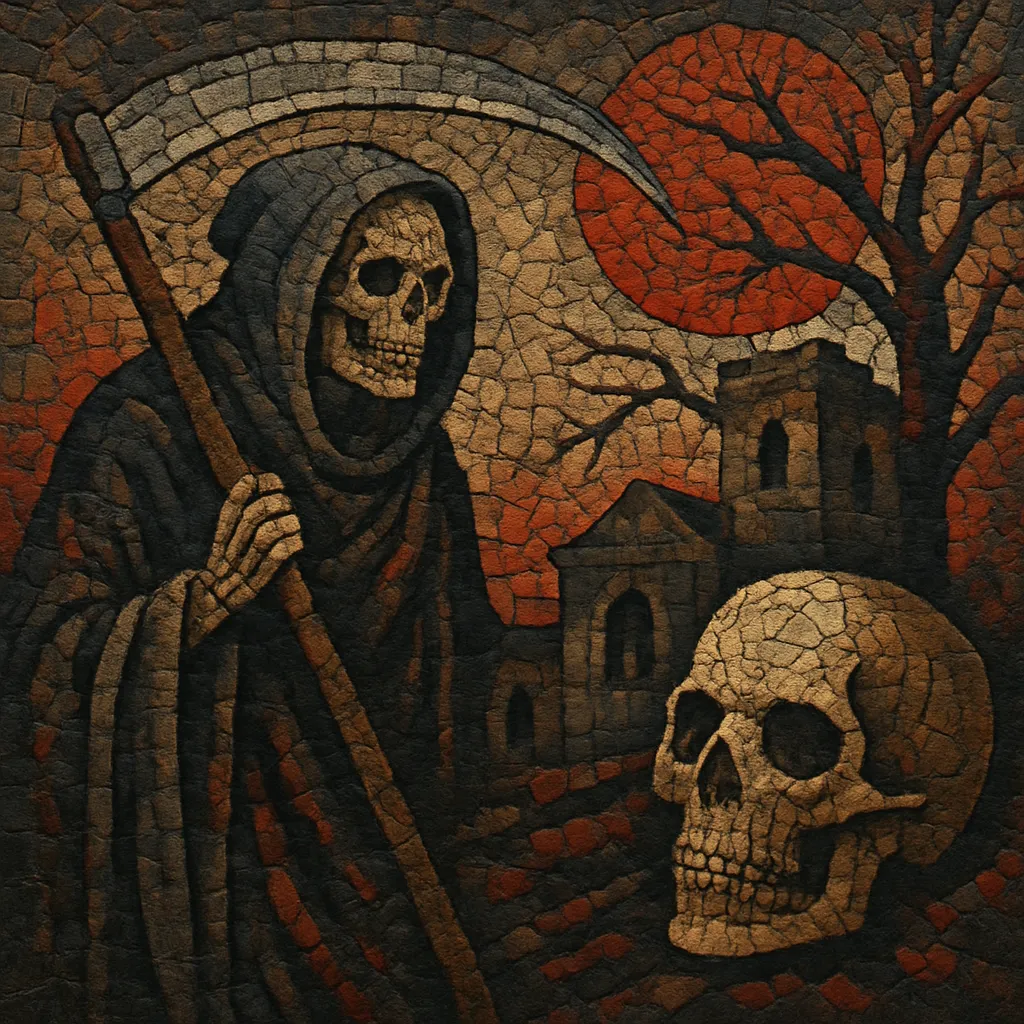Death-doom metal is a fusion of death metal’s extremity and doom metal’s slow, crushing weight. It pairs down-tuned, monolithic riffs and oppressive tempos with death metal features such as guttural growls, occasional double-kick bursts, and abrasive distortion.
The mood is bleak and melancholic, often enhanced by minor-key harmonies, sustained chords, and sparse melodic figures. Some bands add keyboards, violin, or clean guitar interludes to deepen the sense of tragedy and atmosphere. Lyrically, it focuses on grief, mortality, desolation, and existential dread.
Arrangements tend to be long-form and dynamic: glacial passages anchor the music while strategically placed surges of death-metal intensity create cathartic contrast.
Death-doom metal emerged in the late 1980s as bands began melding the slow, heavy aesthetics of doom metal with the harsh vocals and extremity of death metal. Early signposts included the United States’ Winter, whose 1990 album “Into Darkness” set a template for cavernous tone, crawling tempos, and guttural delivery.
In the early 1990s, the United Kingdom became the key crucible through the “Peaceville Three”: Paradise Lost, My Dying Bride, and Anathema. Albums such as Paradise Lost’s “Gothic” (1991), My Dying Bride’s “Turn Loose the Swans” (1993), and Anathema’s “Serenades” (1993) codified the style—pairing sorrowful melodies, occasional violin or keys, and death growls with doom’s weight. These works helped define an atmosphere that later fed into the development of gothic metal.
Simultaneously, Finland’s Thergothon and Australia’s diSEMBOWELMENT pushed the sound toward even slower, more abyssal territories (e.g., Thergothon’s “Stream from the Heavens,” 1994; diSEMBOWELMENT’s “Transcendence into the Peripheral,” 1993), laying a foundation for funeral doom metal. The Netherlands’ Asphyx drew doom-death lines from a more straightforward death metal angle, further diversifying the palette.
By the mid-1990s, some originators evolved toward gothic metal or atmospheric rock, but death-doom persisted and resurged in the 2000s. Finland’s Swallow the Sun, the U.S.’s Novembers Doom, Ireland’s Mourning Beloveth, and Finland’s Hooded Menace carried the torch, refining production while preserving the genre’s mournful grandeur and weight. The style remains vibrant, with contemporary acts blending classic doom-death with touches of shoegaze, ambient texture, or melodic death metal while retaining the core ethos of sorrowful heaviness.


